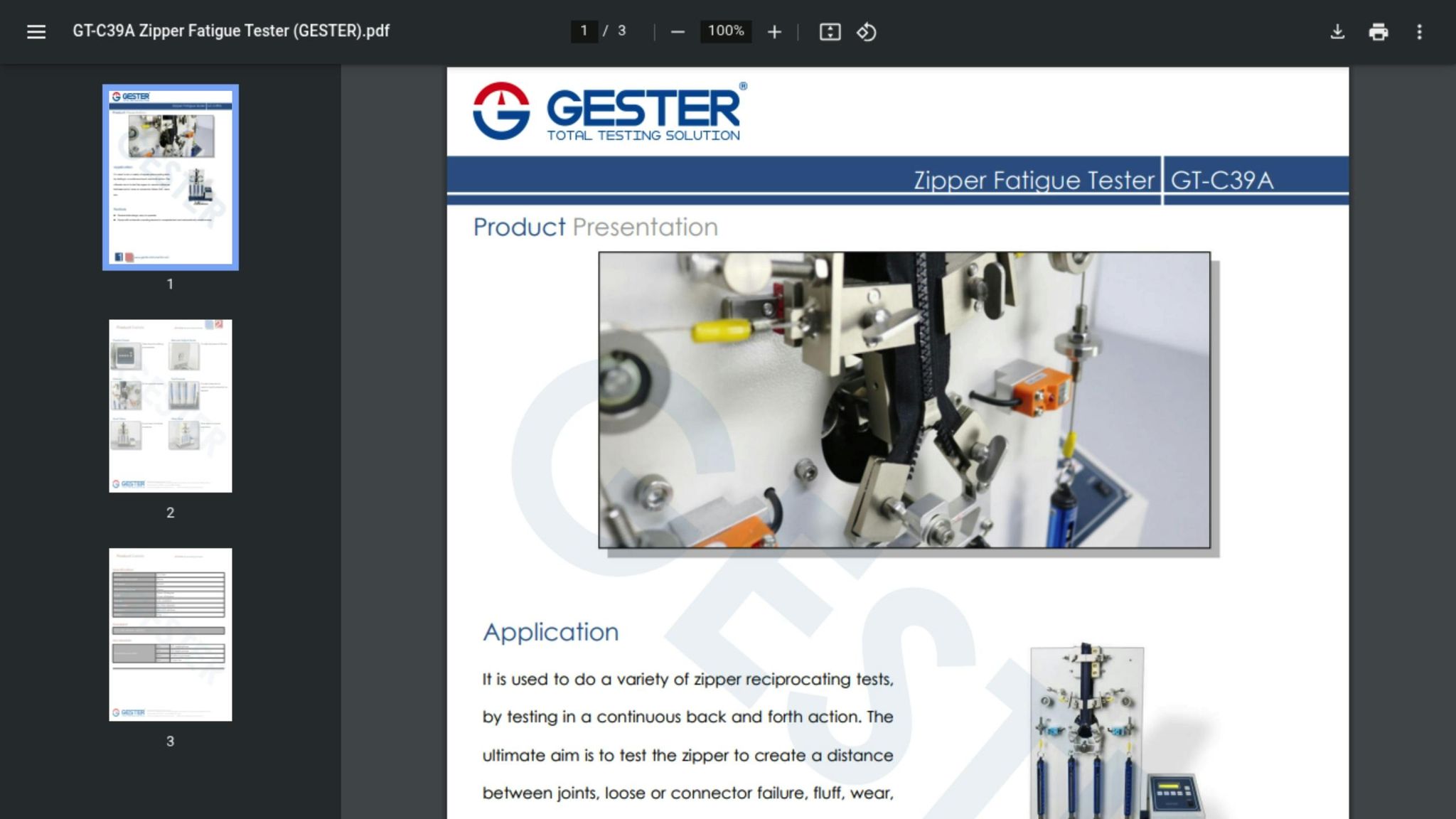Key Takeaways:
- Why Test Zippers? To check strength, durability, and resistance to wear, ensuring bags last longer and meet customer expectations.
- Main Testing Standards:
- ASTM D2061: Measures strength (pull, cross-wise, and retention tests).
- ASTM D2062: Assesses functionality over 1,000 usage cycles.
- ASTM D3657: Ensures zippers meet size and compatibility requirements.
- International Standards:
- BS 3084 (UK): Focuses on strength and slider lock tests.
- JIS 3015 (Japan): Tests for corrosion, UV, and humidity resistance.
- DIN 3419 (Germany): Evaluates durability and temperature resistance.
- Performance Metrics: Breaking strength, locking mechanism reliability, corrosion resistance, and smooth operation.
Quick Comparison:
| Standard | Focus | Key Tests |
|---|---|---|
| ASTM D2061 | Strength | Pull, cross-wise, top/bottom stop |
| ASTM D2062 | Functionality | Slider operation, chain alignment |
| ASTM D3657 | Dimensions | Chain width, element spacing |
| BS 3084 (UK) | Strength & Lock Performance | Tensile, lateral, slider lock |
| JIS 3015 (Japan) | Environmental Resistance | Corrosion, UV, humidity |
| DIN 3419 (Germany) | Durability & Temperature | Operational durability, pull-apart |
By adhering to these standards, manufacturers ensure zippers perform well in demanding situations, providing reliability for sports, travel, and specialized bags like golf or pickleball bags.
Zipper Fatigue Tester GT-C39A Zipper Testing Machine

ASTM Zipper Testing Standards

The American Society for Testing and Materials (ASTM) provides guidelines for testing zippers to ensure consistent quality in bag production.
ASTM D2061 Strength Testing
ASTM D2061 focuses on evaluating the mechanical strength of zippers using several key metrics:
| Test | Testing Parameters | Acceptance Criteria |
|---|---|---|
| Pull Strength | 25–150 lbs | No separation at rated load |
| Cross-wise Strength | 15–90 lbs | No tooth breakage |
| Top Stop Retention | Minimum 15 lbs force | No displacement |
| Bottom Stop Retention | Minimum 12 lbs force | No separation |
ASTM D2062 Function Testing
This standard assesses zipper functionality over 1,000 cycles, focusing on:
- Slider Operation: Must remain smooth throughout 1,000 cycles
- Lock Holding: Tested at angles of 0°, 45°, and 90°
- Chain Alignment: Deviation cannot exceed 0.5 mm
- Insertion Force: Must be under 3 lbs for consumer products
ASTM D3657 Size Standards
ASTM D3657 defines dimensional requirements for zippers, ensuring compatibility and performance:
| Element | Tolerance Range | Measurement Method |
|---|---|---|
| Chain Width | ±0.2 mm | Digital caliper |
| Element Spacing | ±0.1 mm | Optical measurement |
| Slider Clearance | +0.3 mm / –0.1 mm | Gap gauge |
| Tooth Height | ±0.15 mm | Profile projector |
These standards ensure zippers meet strict performance and compatibility criteria. For instance, a #5 nylon coil zipper must maintain a chain width of 5.0 mm ±0.2 mm. At JUNYUAN BAGS, we rigorously adhere to these ASTM guidelines to ensure every zipper meets durability and reliability expectations. These ASTM specifications serve as a global benchmark for zipper quality testing.
International Testing Standards
Building on ASTM guidelines, international standards set additional benchmarks for zipper quality. Many countries enforce strict testing protocols to ensure global compliance.
Here’s a closer look at key standards from major international markets:
BS 3084: British Standards
BS 3084 focuses on testing for tensile strength, lateral strength, and slider lock performance. Zippers must meet these specific benchmarks to comply with the standard.
JIS 3015: Japanese Standards
JIS 3015 emphasizes testing for corrosion resistance, ultraviolet exposure, and humidity effects. These tests ensure zippers can withstand various environmental factors while maintaining functionality and appearance.
DIN 3419: German Standards
DIN 3419 sets guidelines for evaluating operational durability, temperature resistance, and pull-apart strength. These tests help confirm zippers can endure extended use without failure.
At JUNYUAN BAGS, we adhere to these international standards to ensure every zipper meets the necessary requirements for its target market. This approach guarantees consistent quality and durability.
Together, these global protocols work alongside ASTM to create a unified framework for reliable zipper performance under diverse conditions.
sbb-itb-1e6451b
Main Performance Tests
To ensure every zipper meets high-quality standards, we conduct performance tests based on ASTM and international guidelines. These tests assess key factors like functionality and durability, helping us evaluate how well a zipper will perform under tough conditions.
Strength Testing
We test each zipper to find out how much weight it can handle before breaking. This helps us determine its maximum load capacity.
Lock Testing
Lock testing ensures the slider maintains proper tension and stays securely locked, even after repeated use.
Corrosion Testing
This test evaluates how well a zipper resists salt and moisture – an essential factor for outdoor and athletic bags.
These tests ensure every zipper meets rigorous quality standards.
Understanding Test Results
Reviewing zipper test results is crucial for assessing quality and spotting manufacturing issues early, ensuring they don’t impact performance. This process helps predict how zippers will perform in actual use and informs necessary production changes. Below, we’ll explore test standards, performance metrics, and testing protocols.
Test Standards
Quality benchmarks ensure zippers perform reliably in areas like tensile strength, locking mechanisms, corrosion resistance, and durability through repeated use. Some zippers, like those used in waterproof bags or heavy-duty cases, must meet stricter standards to handle specialized demands.
Performance Analysis
Key performance metrics include:
- Breaking strength: The maximum load a zipper can handle before failing.
- Slider retention: How securely the slider stays on the track.
- Corrosion resistance: How well the zipper withstands environmental wear.
- Smooth operation: Consistent and reliable opening and closing.
Even small inconsistencies in these areas can point to manufacturing issues that need correction to maintain product reliability.
Testing Requirements
Accurate and reliable test results depend on strict protocols, including:
- Testing multiple samples from each production batch to ensure results are statistically valid.
- Conducting tests in controlled environments, maintaining consistent temperature, humidity, and protection from sunlight and dust.
- Keeping detailed records, such as batch numbers, test dates, environmental conditions, calibration logs, sample measurements, and pass/fail outcomes.
Following these guidelines ensures the quality of every JUNYUAN BAGS product.
Summary
Zipper testing standards play a key role in ensuring the durability and quality of custom bags. Protocols like ASTM D2061 for strength testing, along with guidelines from ASTM, BS, and JIS, help evaluate whether zippers can handle the heavy demands often seen in sports bag use. These standards are the foundation of quality control, ensuring products meet rigorous performance expectations.
By understanding and applying these testing methods, manufacturers can fine-tune their production processes and consistently meet high-quality benchmarks. Following these protocols ensures bags not only meet customer expectations but also perform reliably across all product lines.
At JUNYUAN BAGS, we rely on strict testing standards to produce sturdy, dependable bags designed to meet our customers’ specific needs.




 Mobile/What's App/Wechat
Mobile/What's App/Wechat E-Mail
E-Mail ADD
ADD




